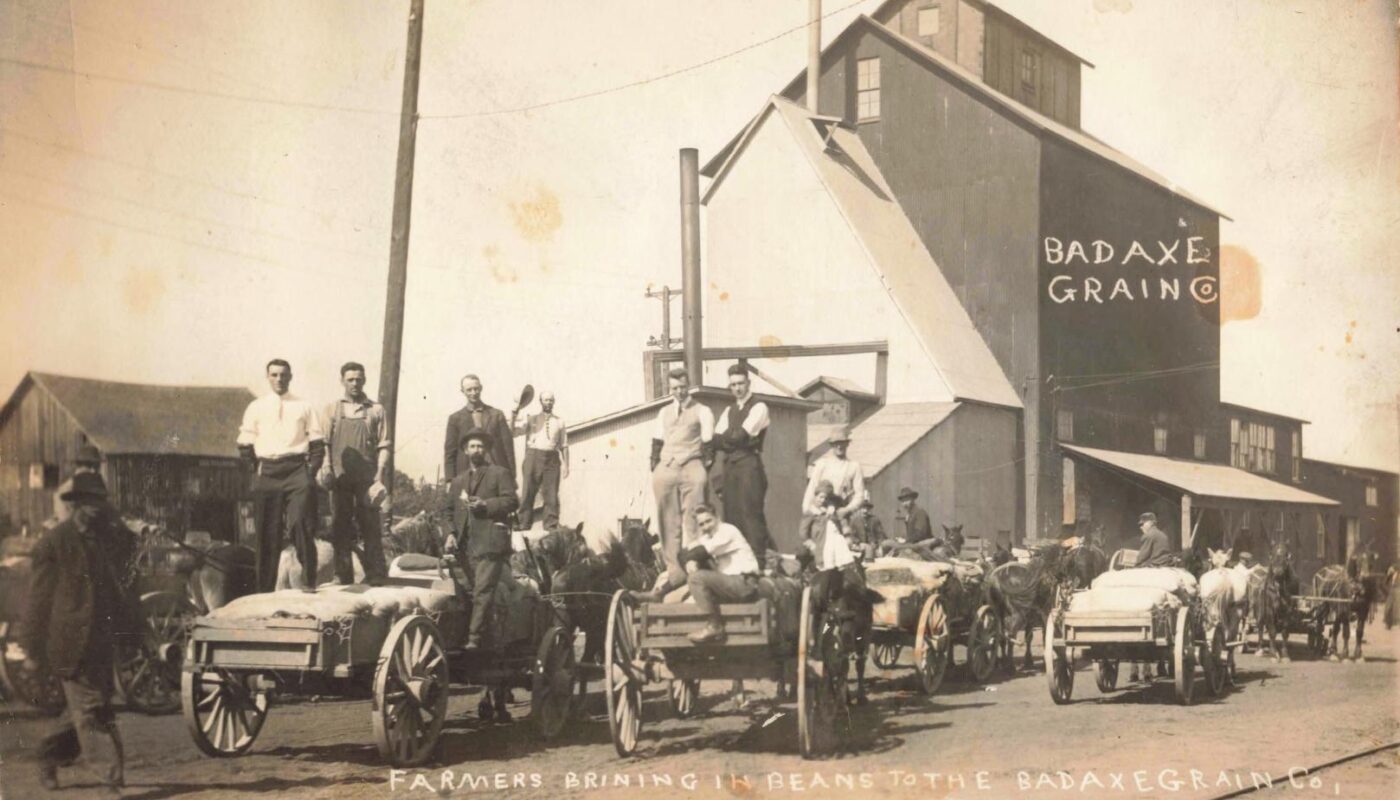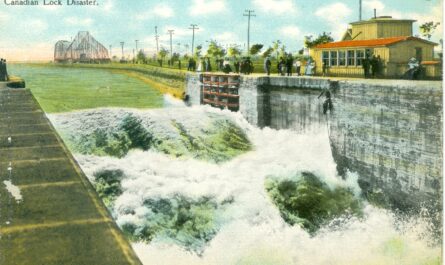This photograph captures a moment in early 20th-century Bad Axe, Michigan, likely taken in the 1910s or shortly thereafter. The image documents farmers arriving by horse-drawn wagons to deliver navy beans to the recently established Bad Axe Grain Company, founded in 1903 by W.H. Wallace. At that time, Huron County had become a major producer of beans, with thousands of acres dedicated to bean cultivation, making grain elevators vital to the regional farm economy.
The image shows multiple wagons loaded with sacks of beans, drawn by horses, lined up outside a sizeable framed grain elevator labeled “Bad Axe Grain Co.” The men standing on the wagons and at ground level suggest a cooperative effort among local growers to bring their harvest to central storage and shipment points. The presence of such a structure indicates the shift from small-scale delivery to more organized aggregation and railbound transport of crops—a hallmark of the modernizing agricultural economy in the Thumb area.
This scene reflects the broader transformation of Michigan’s Thumb from frontier to farm belt in the early 1900s. Grain elevators like the one shown enabled collective marketing, efficient transport, and expanded farm output. They form an essential part of Huron County’s agricultural legacy, underscoring how local operations such as the Bad Axe Grain Company supported rural communities, boosted regional commerce, and tied Michigan’s farms to national markets.




